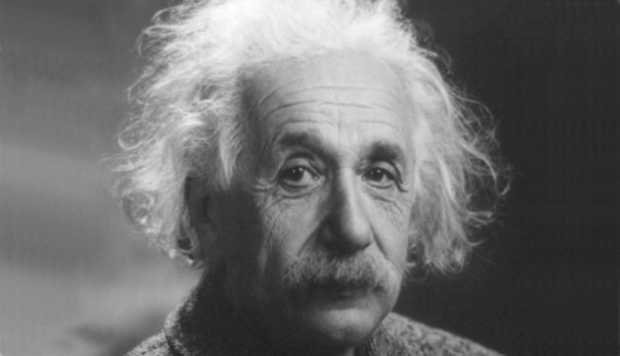The Math of General Relativity: Albert Einstein's Trouble with Tensor Calculus
While the world rightly perceives Albert Einstein as having been a brilliant physicist, the mathematics of General Relativity were so difficult as to be beyond even him.
Albert Einstein worked feverishly for more than a decade to develop the theory which would become perhaps his greatest legacy in the scientific community. General Relativity, that theory which defines the very shape of both space and time, and which finally begins to explain the phenomenon of gravity, was far more difficult than anything he had yet attempted in his career. The reason for this is that it required an entirely new method of thinking about mathematics.
The theory of General Relativity is constructed entirely around a perplexingly difficult form of math called "tensor calculus" (also known to mathematicians as Absolute Differential Calculus). It was math that even Einstein, with all of his scientific brilliance, was rather unfamiliar with in the years leading up to 1916 (the year he would first publish his theory).
What is a Tensor?
To keep things as simple as possible, tensors are mathematical formulas used to describe complex motion in uneven space. So where standard, linear calculus might be used to describe the straightforward motion of an automobile (providing the space it was moving through was perfectly even), the motion of a ship being tossed about by the ocean would require tensor calculus.
Tensors may be used to define space that is non-Euclidean (that is, not flat or "geometrically regular"). Obviously, the sheer number of possible shapes and motions show just why tensor calculus proves to be so difficult. It is necessary for General Relativity, however, which theorizes that the nature of space-time is not a flat, smooth three dimensional surface, but rather a changing and adapting place, curved in all manner of directions based on concentrations of mass. It is not hard to understand where the challenge lay.
Einstein's Tensor Education
Einstein had so much difficulty in understanding the math required by his own theory that he was forced to seek help from greater mathematicians than himself. It is said that he received help from his friend, mathematician Mercel Grossman (who had been his friend for many years, and had been responsible for helping Einstein acquire his job at the Swiss patent office where he first developed his Special Theory of Relativity in 1905).
Between the years of 1915 to 1919, Einstein held a correspondence with the Italian mathematician Tullio Levi-Civita – who in 1900 published perhaps the most important work on tensor calculus to this very day - who desired to help him fix some mathematical errors he had found in Einstein’s work.
Because of this help, Einstein was able to give his work a solid mathematical foundation. Using this “relativistic” math, Einstein could use his theory to make predictions – tests that might help to confirm or deny his ideas. He developed tests regarding the curvature of light around the sun, about the orbit of the planet Mercury, and of the effects of gravity on time, all of which have been tested and found to be true to Einstein’s theory.
When it was first released, it was said that there were perhaps a dozen people in the world who truly understood it. It was surely an exaggeration, of course, but it is a testament to just how difficult Einstein’s theory was, and how remarkable it was that he, with just a little help from his friends, figured it out on his own.
The math of General Relativity goes a long way to prove Einstein's genius.
References:
Einstein, A. (1961). Relativity: The Special and the General Theory - A clear Explanation that Anyone can Understand. New York, NY: Random House.
Einstein, A. (1922). The Meaning of Relativity: Including the Relativistic Theory of the Non-Symmetric Field, fifth edition. New York, NY: Barnes and Noble Books.
Feynman, Richard. “The Feynman Lectures on Physics.” 1971
Gardner, M. (1962). Relativity Simply Explained. Mineola, NY: Dover Publications, Inc.
